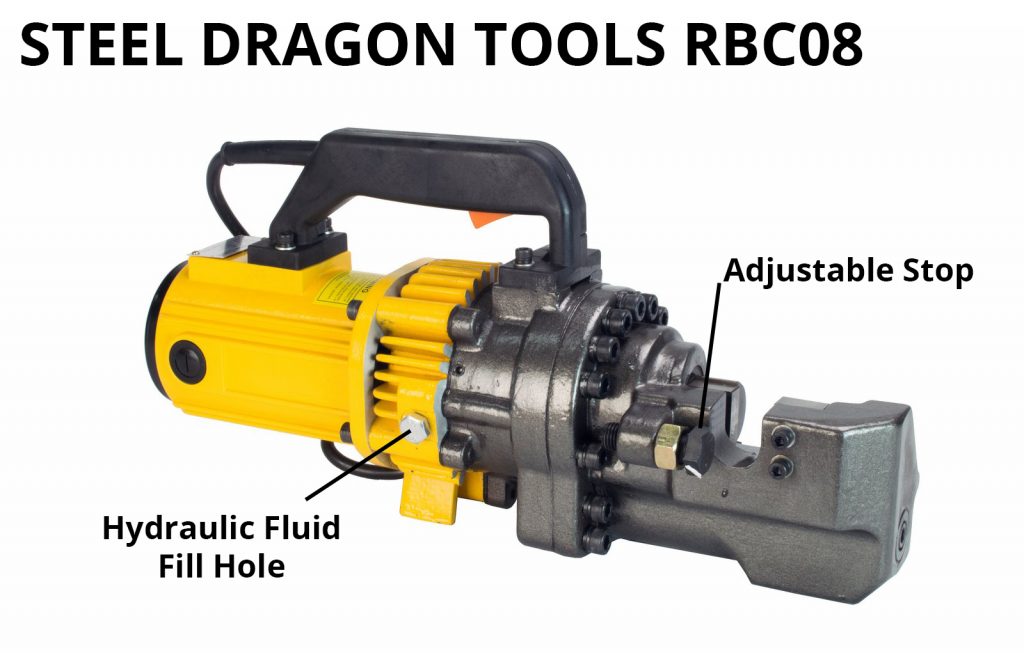The Versatile 87740 Motor
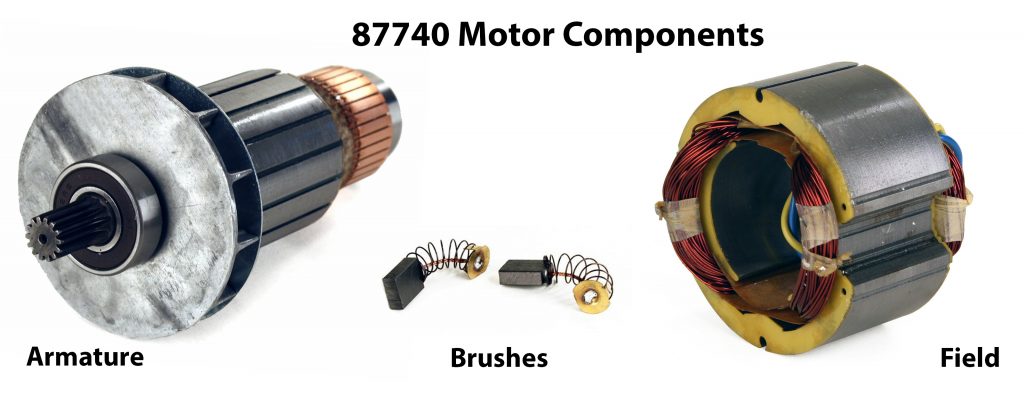
The 87740 motor is the driving force behind some of the most popular pipe threaders in the industry, including the RIDGID® 300 and 535. The Steel Dragon Tools version of the 87740 motor powers the Steel Dragon Tools 300 and 7090i. The 87740 motor is a versatile work horse and can be used across a variety of platforms thanks to interchangeable gearboxes. This motor is reliable, durable, and easy to service should the need ever arise.
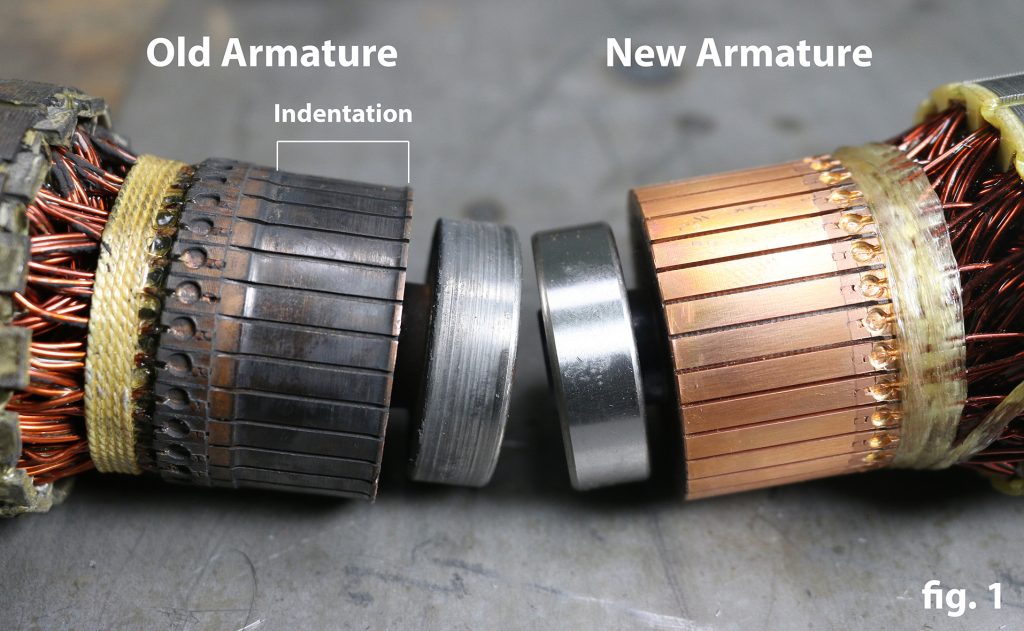
The 87740 motor has three main components; the field, the armature, and brushes.
The brushes are the item most likely to wear out first. The brushes are designed to make constant contact with the commutator of the armature. While the brushes are considered a wear item to be replaced on occasion, it is also important to inspect the armature and especially the commutator. After many years of use, the commutator can be worn away due to the constant contact with the motor brushes. This wear will result in a slight indentation in the commutator (fig. 1). New brushes will not be able to make solid, constant contact with the commutator, resulting in sparking, higher current draw, and loss of power. If the commutator shows this type of wear, it is easier and more cost effective to replace the entire armature.
The motor field is not a wear piece and will rarely need to be replaced unless it is damaged. Damage is most likely to occur during operation or maintenance. The field can be damaged by an electrical surge or if an internal wire is pinched.
Steel Dragon Tools offers replacement parts that will fit any 87740 model. Steel Dragon Tools is also a full-service repair shop specializing in reconditioning pipe threading machines. Steel Dragon Tools technicians have decades of experience and can quickly diagnose and repair most 87740 motors.
For more information on Steel Dragon Tools call 734-224-7112 or e-mail customer service here.
Steel Dragon Tools products are available for purchase from Affordable Tool and Toolz Unlimited. Steel Dragon Tools products can also be purchased at major online retailers like Amazon, Sears, and Walmart.
We are not an authorized distributor of RIDGID® and/or Ridge products. RIDGID® Marks are trademarks of RIDGID, Inc and are used for product identification purposes only.
Tools repaired and reconditioned by Steel Dragon Tools voids original warranties and certifications from Ridge Tool.
Steel Dragon Tools is always looking for used or broken pipe threading machines and pipe threading accessories. Click here for the purchase list and prices.
Obscure Fact About the 535
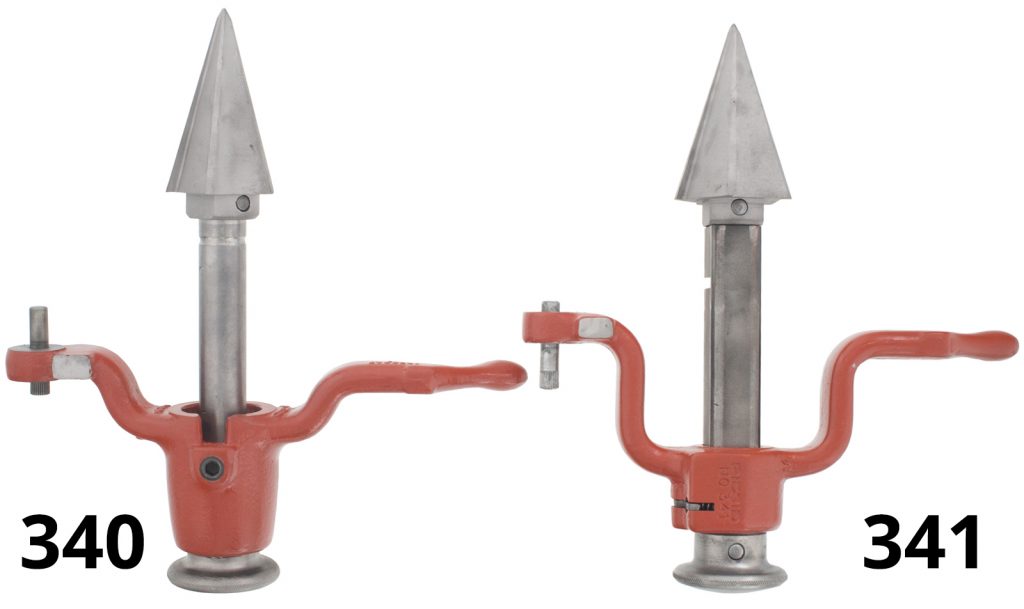
Steel Dragon Tools has over a decade of experience refurbishing pipe threading machines and accessories. The RIDGID® 535 is a prime candidate for reconditioning and can be found quite often in the Steel Dragon Tools shop. The 535 debuted on the market in 1957 and has been running in one form or another for over 50 years. Despite the years of experience, the technicians in the Steel Dragon Tools shop are always learning something new. In this case, the technicians pointed out that an 815A die head is not compatible on a 535 Version 1 machines that is equipped with a 340 Reamer.
This is a very specific issue that won’t affect most customers who use a 535 Version 1 machine. While the 815A die head is compatible with the 535, most customers will use the 811A die head. The 811A die head is much more common and is included with all reconditioned RIDGID® 535 packages offered by Steel Dragon Tools. For customers who have a 535 Version 1 machine and want to use an 815A die head, be sure to check which reamer in on the machine.
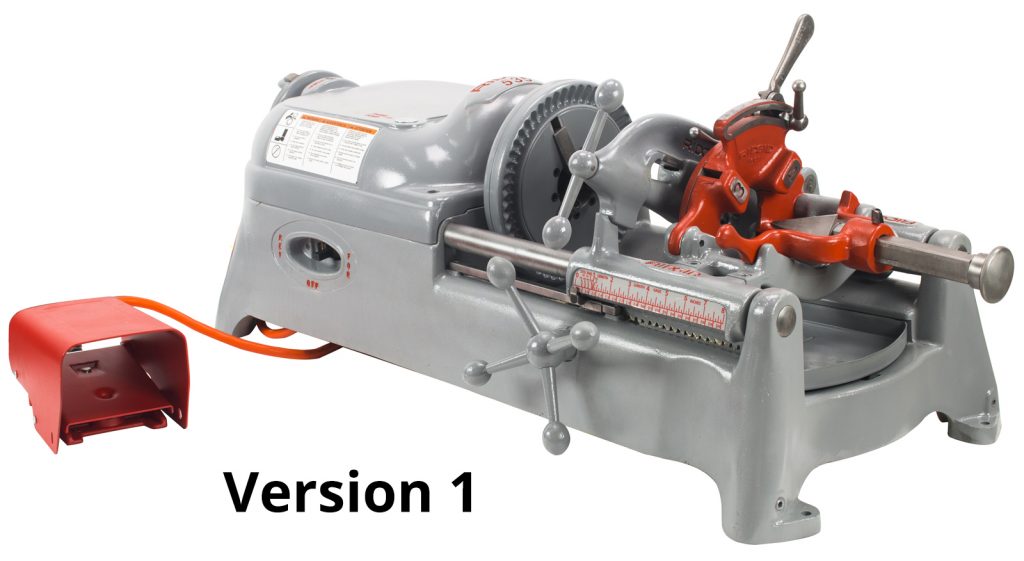
Over the years, as the 535 machine changed from Version 1 to Version 2 to Version 3, the attachments changed slightly as well. The 811 die head became the 811A die head and allowed for automatic oiling. The 815A die head was later introduced with an automatic opening feature that opens the die head when threading is complete. The 340 reamer was updated slightly to become the 341 reamer.
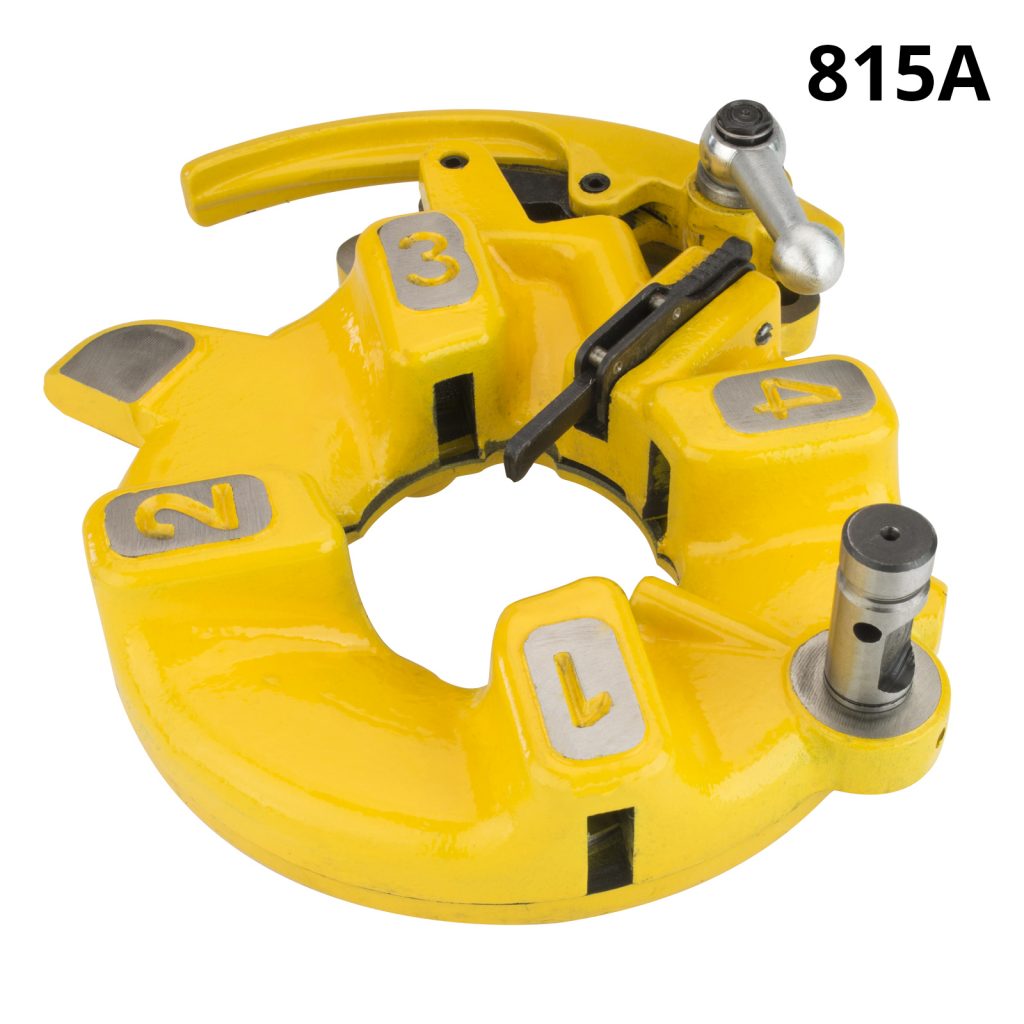
The 341 reamer is standard on later model 535 machines but will also fit the original 535 design. The difference between the 340 and 341 is nominal. The only thing that has changed over 50 years is the shape of the reamer arm. The 341 reamer has a shallow arm while the 340 reamer has a much more pronounced arm. It is the arm of the 340 reamer that will contact the 815A die head trigger, preventing the reamer from raising or lowering on the machine. This is only an issue when using an 815A die head on a RIDGID® 535 Version 1 machine that is equipped with a 340 reamer.
To learn more about Steel Dragon Tools reconditioned RIDGID® 535 machines, click here.
To learn about the difference between 811 and 815 die heads, click here.
For more information on Steel Dragon Tools call 734-224-7112 or e-mail customer service here.
Steel Dragon Tools products are available for purchase from Affordable Tool and Toolz Unlimited. Steel Dragon Tools products can also be purchased at major online retailers like Amazon, Sears, and Walmart.
Steel Dragon Tools is always looking for used or broken pipe threading machines and pipe threading accessories. Click here for the purchase list and prices.
We are not an authorized distributor of RIDGID® and/or Ridge products. RIDGID® Marks are trademarks of RIDGID, Inc and are used for product identification purposes only.
Wire Strippers – WRA 10 vs WRA 15
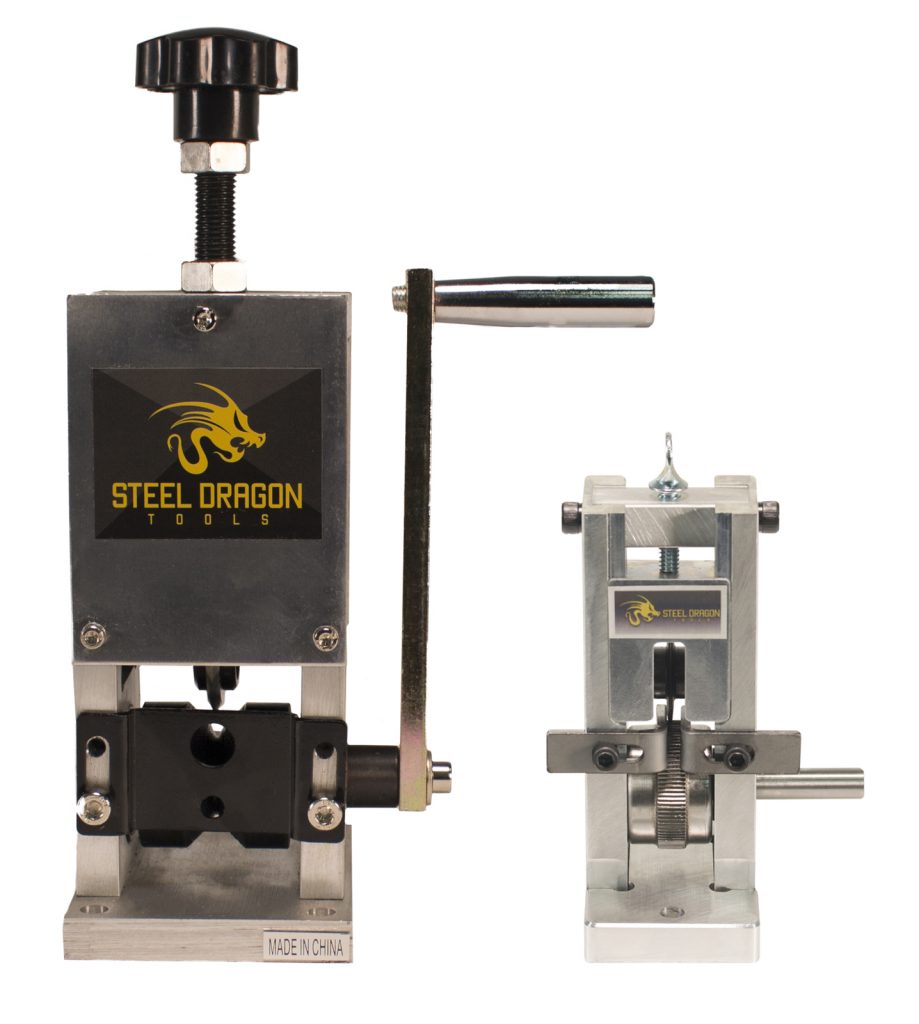
Steel Dragon Tools offers several different models of wire strippers. The two entry level options are the WRA10 and the WRA15. Both models can be operated manually with a hand crank or automatically with a drill. The WRA10 and WRA15 are an ideal entry point for anyone looking to strip wire and increase recycling payouts on scrap metal.
The WRA10 is small, at 6-inches in height it is almost pocket size. But behind the diminutive size is an easy to operate machine that will quickly and cleanly strip up to 450 inches of wire per minute when connected to a drill. The WRA10 will strip wire up to roughly 1/2-inch in diameter.
The WRA15 is the more traditional benchtop model. It boasts a larger size and wire-stripping capability. Standing at 12-1/2-inches in height it will also strip up to 450 inches of wire per minute when connected to a drill. The WRA15 will strip wire up to roughly 1-inch in diameter.
Set Up is Key
Set up is the most important step to successfully strip wire. Following these tips will help make the wire stripping process quick and easy. These tips apply to both the WRA10 and WRA15.
- Secure the wire stripper to the benchtop. Screwing or bolting the wire stripper to the bench will stop it from moving during the stripping process, freeing the hands to feed the wire and operate the drill at the same time.
- Separate wire by size, set machine to strip that size, and then strip all of that wire at once. Getting the wire stripper keyed in to quickly strip the wire requires careful set up. Strip one size at a time before moving on to avoid wasting time readjusting between each piece.
- Do not run the drill at full speed. A common mistake is to run the drill as fast as possible. Typically, this will result in a wire that isn’t completely stripped as well as reducing the life of the cutting wheel.
- Run the drill slowly and at an even pace. The same applies when using the hand crank.
- Run the wire through twice. The WRA10 and WRA15 only have one cutting wheel. Run the wire through once and then rotate it 180 degrees before running it through again. Two cuts in the casing will make stripping the wire much easier.
- Straighten the wire and cut it into manageable pieces between 12-inches and 24-inches in length. A straight piece of wire has little chance of bunching up and clogging the machine. A short piece of wire will run through the machine quickly, especially if the operator wants to run it through twice.
- Running long pieces of wire can pose a safety hazard. This warning applies to the larger machines but the principle is still the same. When running long pieces of wire can be dangerous as the wire may become wrapped around the operator or other nearby objects. The operator or these objects can then be pulled toward the wire stripper if enough force is being generated.
For more information on Steel Dragon Tools call 734-224-7112 or e-mail customerservice@steeldragontools.com.
Steel Dragon Tools products are available for purchase from Affordable Tool and Toolz Unlimited. Steel Dragon Tools products can also be purchased at major online retailers like Amazon, Sears, and Walmart.
“A” is for Automatic – 811A and 815A

Die heads for most Steel Dragon Tools and RIDGID® power pipe threading machines will either be automatic or non-automatic. Automatic refers the die head’s ability to automatically oil the pipe during the pipe threading process. These die heads will have a through-head oiling system. Automatic die heads will also have an “A” designation in their name like 811A or 815A.
The die head will connect to the pipe threading machine’s oil reservoir, if the machine has one (Steel Dragon Tools and RIDGID® 300 Power Drives do not have an oil reservoir and require a separate, manually operated oiler – like the Steel Dragon Tools 418 Oiler).
A pump in the pipe threading machine will push pipe threading oil to the die head where it will be distributed over the pipe during the pipe threading process. The automatic-style die head is now used across the industry. Non-automatic 811 and 815 die heads are typically not sold as new but can be found used or reconditioned. Steel Dragon Tools buys and reconditions used and broken pipe threading machines and accessories, including RIDGID® 811, 811A, 815, and 815A die heads.
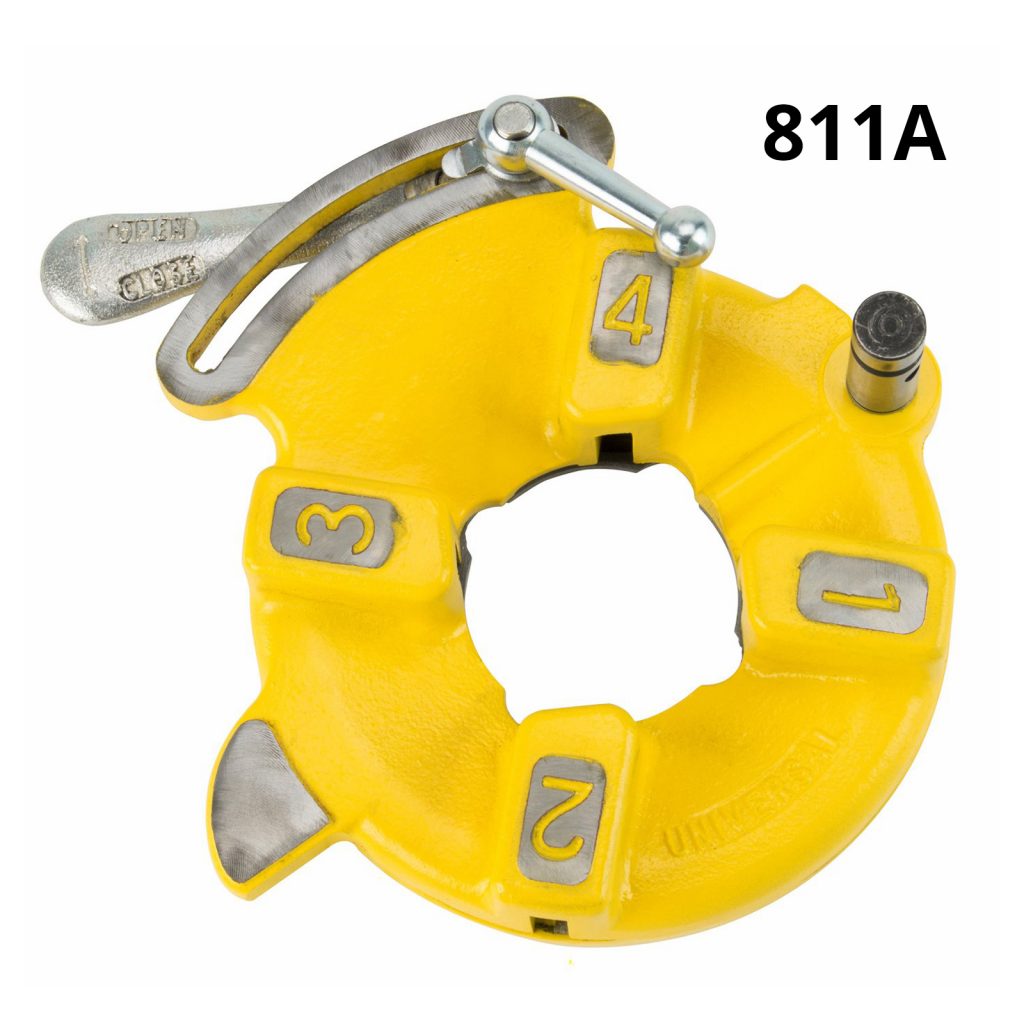
Click here for more information on selling used equipment to Steel Dragon Tools.
Click here to learn more about the importance of pipe threading oil.
Click here to learn more about the difference between 811 and 815 die heads.
For more information on Steel Dragon Tools call 734-224-7112 or e-mail customerservice@steeldragontools.com.
Steel Dragon Tools products are available for purchase from Affordable Tool and Toolz Unlimited. Steel Dragon Tools products can also be purchased at major online retailers like Amazon, Sears, and Walmart.
RIDGID® marks are trademarks of RIDGID, Inc and are used only for product identification purposes.
811 vs 815 Die Head Debate
 A die head (or two) is a requirement for most industry-standard pipe threading machines. Using a Steel Dragon Tools 300, 300C, 7090-PRO, 7090i, 7090e, or a RIDGID® 300, 300A, 500A, 535, 535A, 800, 801, 802, or 1822 pipe threading machine will require a die head. Pipe threading professionals can choose between the 811- or the 815-style die head. (Most 811- and 815-style die heads are now being manufactured with automatic oiling operation, designated by the letter A — more on this next week.)
A die head (or two) is a requirement for most industry-standard pipe threading machines. Using a Steel Dragon Tools 300, 300C, 7090-PRO, 7090i, 7090e, or a RIDGID® 300, 300A, 500A, 535, 535A, 800, 801, 802, or 1822 pipe threading machine will require a die head. Pipe threading professionals can choose between the 811- or the 815-style die head. (Most 811- and 815-style die heads are now being manufactured with automatic oiling operation, designated by the letter A — more on this next week.)
The main difference between the 811 and the 815 comes in operation. The 815 die head has a trigger mechanism that will automatically open the die head and stop the threading process once a certain number of threads have been cut. The 811 die head has a quick open lever that must be opened manually to stop the pipe threading process. Both die heads can be used to thread pipe and bolts, both thread in the right-hand direction, and both have the same threading capacities.
Seems like an easy choice, right? However, the 811 die head allows for a flexibility in threading that the 815 cannot accommodate. The 815 die head will always cut the same number of threads per pipe size before the pipe hits the trigger and stops the threading process. The 811 die head can thread further down the pipe should the need arise.

The 811 die head will also be more reliable in the long run since there are no extra mechanical pieces to break or malfunction. Price-wise, the 815 will be slightly more expensive than the 811 but not by much.
Steel Dragon Tools manufactures an 811A and 815A die head that will fit most industry standard pipe threading machines including Steel Dragon Tools and RIDGID® machines. Steel Dragon Tools 811A and 815A die heads are offered with an automatic oiling feature for use on pipe threading machines that have a pipe threading oil reservoir.
For more information on Steel Dragon Tools call 734-224-7112 or e-mail customerservice@steeldragontools.com.
Steel Dragon Tools products are available for purchase from Affordable Tool and Toolz Unlimited. Steel Dragon Tools products can also be purchased at major online retailers like Amazon, Sears, and Walmart.
Steel Dragon Tools is always looking for used or broken pipe threading machines and pipe threading accessories. Click here for the purchase list and prices.
We are not an authorized distributor of RIDGID® and/or Ridge products. RIDGID® Marks are trademarks of RIDGID, Inc and are used for product identification purposes only.
Making Pipe Dies Last
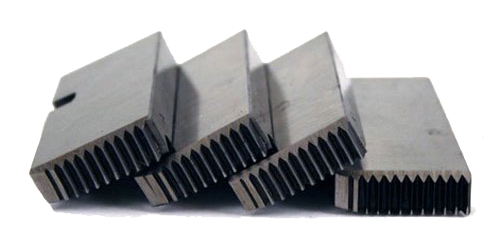 Quality pipe threading dies should last a very long time if care is taken to keep them in good working order. Steel Dragon Tools manufacturers dies that are compatible with several brand-name die heads and pipe threading machines. Steel Dragon Tools dies are made from a composite alloy or high-speed steel and, under proper working conditions, should last a very long time.
Quality pipe threading dies should last a very long time if care is taken to keep them in good working order. Steel Dragon Tools manufacturers dies that are compatible with several brand-name die heads and pipe threading machines. Steel Dragon Tools dies are made from a composite alloy or high-speed steel and, under proper working conditions, should last a very long time.
To get the most out of a set of Steel Dragon Tools dies, here are some important tips to keep in mind when threading pipe. The following tips should be applied to powered and manual pipe threading machines.
- Always use a high-quality pipe threading oil. High-quality pipe threading oil will reduce the friction between the dies and the pipe. The oil will also absorb heat during the threading process. Excess heat during the threading process can damage the dies and the pipe. Excess heat can cause metal chips to become welded to the dies. Metal chips in the die teeth will affect the consistency and shape of the threads.
- Keep the dies clean. Clean dies make for clean threads. After threading pipe, use a stiff-bristle wire brush to clean any debris that may be stuck in the die teeth.
- Install the dies properly into the die head. Dies that are not properly installed can result in damage to both the die teeth and the pipe. Double check to make sure the dies are properly installed before threading pipe.
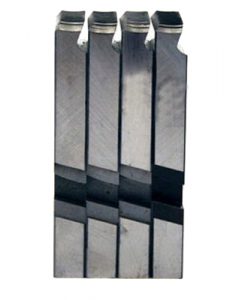
Following these steps will help ensure that the Steel Dragon Tools dies enjoy a long operating life and provide you with many perfectly threaded pipes.
To view Steel Dragon Tools dies, click here.
For more information on the Steel Dragon Tools dies call 734-224-7112 or e-mail customerservice@steeldragontools.com.
Learn more about the importance of pipe threading oil.
Learn more about installing dies into die heads.
Learn more about Steel Dragon Tools die heads.
Steel Dragon Tools products are available for purchase from Affordable Tool and Toolz Unlimited. Steel Dragon Tools products can also be purchased at major online retailers like Amazon and Walmart.
Tips and Tricks for the 535
One of the common complaints from users of the Steel Dragon Tools Reconditioned RIDGID® 535 is that the chuck or the pipe wobbles, resulting in unusable threads.
If the machine is not threading properly, check the dies first. A good set of dies should last a very long time. Unless the die teeth are chipped or otherwise damaged, the dies should work without issue. Next, check the installation. Dies will fit into the die head only one way but should be installed securely and in the proper order. If the dies are installed properly, check the rear centering chuck. The rear centering chuck simply keeps the pipe centered in the machine. Do not over tighten the rear chuck. Only hand tighten the rear chuck, do not use tools.
The front chuck does most of the work when threading pipe. The front chuck should only be hand tightened. Do not use tools to tighten the front chucks.
To tighten front and rear chuck, spin chuck forcefully in a counter clockwise motion. The chuck will tighten around the pipe. Do this several times to ensure a snug fit. The sound the that the chuck makes will change as it tightens. Once the sound changes, the chuck is tight. A tightened chuck will give off a short, dull sound as the chuck has already tightened around the pipe.
Other Tips to Remember:
The guide marks on the die head are not exact. Always run a simple threading test before threading the actual work piece. Use a properly-sized fitting to test the threads. A properly threaded pipe will allow the fitting to turn one and a half to two turns before meeting any resistance. If the fitting continues to turn easily or does not turn at all, the die head settings will need to be adjusted.
Threads should only be cut to the width of the die head. Cutting threads too far down the pipe may result in unusable threads. Some dies are designed to cut tapered threads. Cutting beyond the width of the die head will result in straight threads instead of the desired tapered threads.
For more information about Steel Dragon Tools please call contact Customer Service at 734-224-7112 or by e-mail here.
RIDGID® marks are trademarks of RIDGID, Inc and are used only for product identification purposes.
Pipe Abbreviations
As with any profession, there can be lots of arcane abbreviations and jargon – pipe threading is no different. Steel Dragon Tools is committed to educating customers and helping them make informed decisions. Buying a new pipe threader from Steel Dragon Tools may have been the easy part, but trying to figure pipe nomenclature can be downright confusing. For anyone new to the industry, or for veterans looking for a quick refresher, here is how to make sense of pipe nomenclature.
American National Standard Pipe Thread standards are always represented as a string of numbers and letters. Pipe nomenclature will look like this: 3/4 – 14 NPTG. All numbers and letters stand for something and are important to understand the pipe size, the threads per inch, and how the pipe will be used. The first number (3/4) refers to the pipe’s nominal size or outside diameter. The second number (14) will give the threads per inch. The string of letters will describe the threading standard (N stands for National), the type of material being threaded (P stands for Pipe), the thread type (T stands for tapered), and the pipe’s intended use (G stands for gas). All pipe nomenclature must have four letters. Without the fourth letter the use of the pipe and the proper threading procedure cannot be determined.
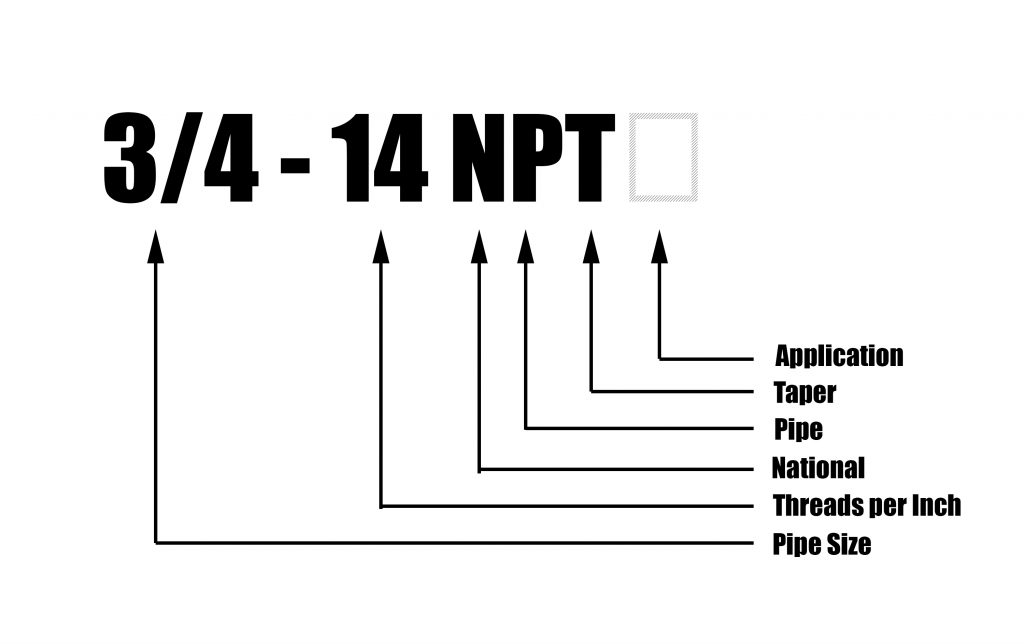
A – Aeronautical
C – Coupling
F – Fuel
G – Gas
H – Hose
I – Intermediate
L – Loose
N – National
P – Pipe
R – Railing
S – Straight
T – Tapered
Steel Dragon Tools manufactures a variety of different pipe dies and die heads for use on the pipe material listed above. For more information on Steel Dragon Tools pipe threading machines, pipe dies, or die heads please click here or contact customer service here or by phone at 734-224-7112.
Steel Dragon Tools pipe dies are available for purchase from AffordableTool.com and ToolzUnlimited.com.
Pipe Threading Tips
When threading pipe with a Steel Dragon Tools die head, or any die head for that matter, it is important to remember that the scale on the top of the die head i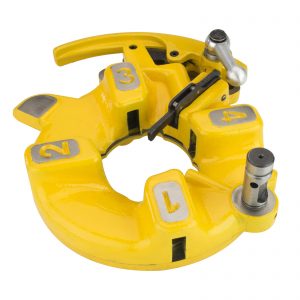 s for reference only. The scale is used to get as close as possible to the correct threading size but it is up to the operator to test the die head, dies, and pipe.
s for reference only. The scale is used to get as close as possible to the correct threading size but it is up to the operator to test the die head, dies, and pipe.
Start by setting the die head to the desired threading capacity. Thread a sample piece of pipe and test the pipe with a c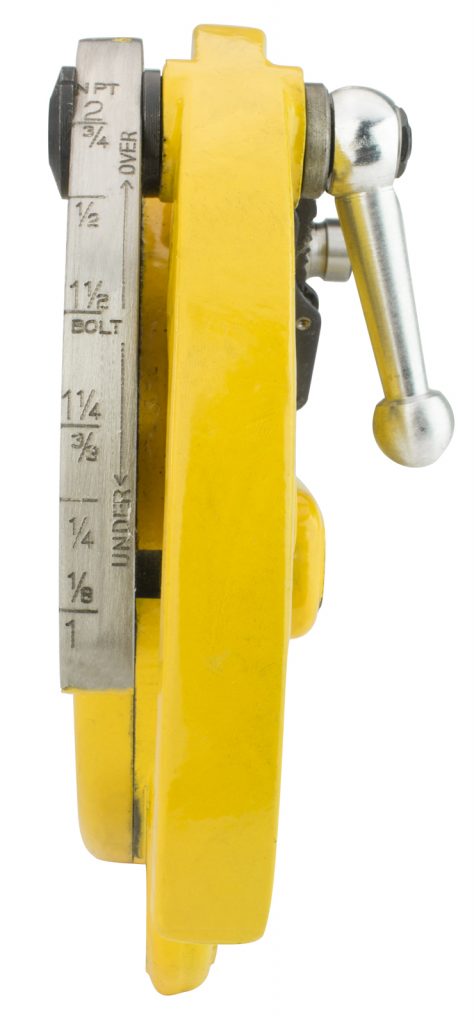 orresponding fitting. A properly threaded piece of pipe will make one and a half to two full turns within the fitting before meeting resistance. A pipe that does not make one and a half to two full turns has threads that were cut too shallow. Shallow threads will not allow the pipe and the fitting to seal properly. A pipe that turns more than two full rotations in the fitting has threads that were cut too deep. A pipe with threads that are too deep may bottom out in the fitting, preventing the pipe and fitting from being tightened.
orresponding fitting. A properly threaded piece of pipe will make one and a half to two full turns within the fitting before meeting resistance. A pipe that does not make one and a half to two full turns has threads that were cut too shallow. Shallow threads will not allow the pipe and the fitting to seal properly. A pipe that turns more than two full rotations in the fitting has threads that were cut too deep. A pipe with threads that are too deep may bottom out in the fitting, preventing the pipe and fitting from being tightened.
Pipe threading is not an exact science, it will take a little finesse and patience to successfully thread pipe and it is a good idea to test the threaded pipe on a regular basis. It is also important to remember that in most cases a sealant will be used on the pipe and fitting to prevent leaks. Using a sealant will allow the operator a bit of leeway when threading pipe.
The pipes themselves can also cause problems during threading. Pipes may not be true to their stated measurements. For example, a 1-inch pipe may be slightly smaller at 15/16 inches in diameter or slightly larger at 1-1/16 inches in diameter. The pipe may also be metric. A 25-millimeter pipe is slightly smaller than a 1-inch pipe but can look identical to the naked eye. Pipe variance must also be considered. Defects in the pipe from the manufacturing process can result in the pipe not being uniform from one end to the other. A pipe might measure 1 in. at the end, bow out to 1-1/16 in. at the middle before returning to 1 in. at the other end. It is always a good idea to periodically test the threaded pipe with a fitting to ensure a tight seal.
More information on Steel Dragon Tools die heads and dies can be found by following the links or calling customer service at 734-224-7112.
Steel Dragon Tools die heads and dies are available for purchase from Craig’s Affordable Tools or Toolz Unlimited.
